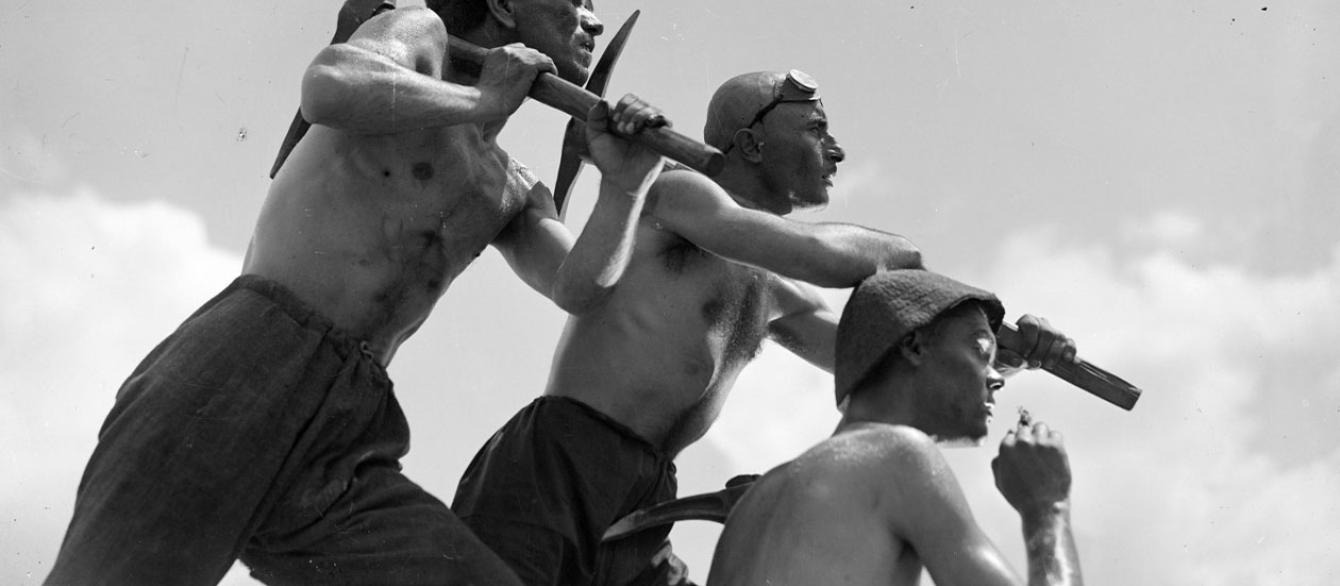Come view two films in the final event in the Harvard Film Archive's series on Georgian silent film.
Salt for Svanetia is a film like no other. Literally, it is impossible to put it in any legible category. Generically, it resides somewhere between a documentary, propaganda, drama, montage manual and Discovery Channel. Unlike many of his fellow Georgian directors, Mikheil Kalatozishvili (who went by Mikhail Kalatozov, the Russified version of his name, for most of his career) came to film directly, not from other arts: his first job was as a studio projectionist and driver, and, after a series of apprenticeships, he graduated to cinematography and directing. In this film, he proudly credited himself “director-cinematographer,” and it is hard to come up with a more telling description. The way Kalatozov’s camera works is unique: with the angles he chooses, it seems to lose the sense of gravity. Fittingly for a movie about life in the mountains, the shot geometry here leans toward the diagonal; if it makes the viewer a little dizzy, this is exactly what one feels at such a height.
Nail in the Boot is radical on all fronts: avant-garde experiments on steroids meet early Stalinist austerity distilled to the state of absolute ether. To be fair, the film had been commissioned by the army film studio for propaganda purposes, and, yes, avant-garde was born with a soft spot for the military force (think of Italian Futurists), but here the camera lingers on the metallic shine of a shell as if it were Greta Garbo’s face. His inability—due to the foot discomfort—to jump over the barbed wire in the middle of nowhere translates into a scene whose dramatic heat reminds one of King Lear praying in the wilderness; the protagonist’s accidental stepping into the puddle of fuel oil—a natural antiseptic, they say, that apparently heals his wound— and lingering there somewhat ecstatically for a minute or two turns into a miniature melodrama of succumbing to a seduction. When, after all this visual and dramatic frenzy, you learn that there is in fact no actual war going on, you feel like–well, see for yourself. Nail in the Boot was immediately banned for “formalism” and unfavorable presentation of the Red Army (I don’t know what they meant: the soldiers all look monumentally heroic here), but I suspect that was not all: on the eve of the epoch of famous show trials, the idea that a defendant can actually raise his voice, defend himself and have his accusers lower their eyes in remorse, couldn’t have sat well with the Soviet authorities.
Written by Daria Khitrova
Sponsorship
This event is cosponsored by the Harvard Film Archive and the Department of Slavic Languages and Literature, with support from the Program on Georgian Studies.
The Program on Georgian Studies is an activity of the Davis Center for Russian and Eurasian Studies at Harvard University and is made possible by a sponsored research award from the Ministry of Education and Science of Georgia.
Accessibility
The Davis Center for Russian and Eurasian Studies at Harvard University encourages persons with disabilities to participate in its programs and activities. If you anticipate needing any type of accommodation or have questions about the physical access provided, please contact us at 617-495-4037 or daviscenter@fas.harvard.edu in advance of your participation or visit. Requests for Sign Language interpreters and/or CART providers should be made at least two weeks in advance if possible. Please note that the Davis Center will make every effort to secure services but that services are subject to availability.




